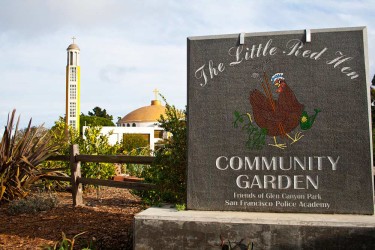Open Space Committee Meets
“Livability” was the main theme on the minds of attendees at SFT’s Open Space Committee meeting in November. The word was dropped by Planning Commissioner Kathrin Moore at a November 5 hearing on the proposed Affordable Housing Bonus Program, and you will probably hear a lot more of it in the future.
Because of the recent influx of people into the city, and the resulting displacement crisis, there has  lately been a lot of talk about affordability without commensurate discussion of livability. Open space, of course, is a big part of what “livability” means; urban geographers say there should be 5.5 acres of it per every thousand urban residents, though what the city’s current commitment is is less clear. Every building project requires a certain amount of open space; AHBP would give developers permission to short us on it (as well as allowing exceptions to height rules) in exchange for building more “affordable” units. Is this acceptable? SFT needs to research just what effect on open space the AHBP is likely to have so we can discuss it effectively at Planning meetings.
lately been a lot of talk about affordability without commensurate discussion of livability. Open space, of course, is a big part of what “livability” means; urban geographers say there should be 5.5 acres of it per every thousand urban residents, though what the city’s current commitment is is less clear. Every building project requires a certain amount of open space; AHBP would give developers permission to short us on it (as well as allowing exceptions to height rules) in exchange for building more “affordable” units. Is this acceptable? SFT needs to research just what effect on open space the AHBP is likely to have so we can discuss it effectively at Planning meetings.
Also pertinent is the question of private versus public open space. A backyard or private atrium is not accessible to the public, yet it may provide habitat for plants and animals, and open space at least for the occupants of the edifice. How much, then, should one count against open space quotas? Such questions do not appear to have been well-considered by the city, and will require more research.
Another issue that requires more study is population growth. If we are expecting a million residents soon, what is the plan to give them sufficient open space? Again, there does not seem to be a lot of data here, and we may have to do a lot of research on our own. A number of possible ways to derive the pertinent information were discussed. One thing that we do know is that most of the available open space is on the west side of town, while most of the development is in the east. Much of the seawall development planning has included parks, but we need to look more deeply into ways to increase open space in the area, especially south of Market.
A desire was expressed for more signage in parks about such things as animal feeding. A large community of rats has grown up around the excess food thrown to ducks, etc.. The need for park benches needs more consideration in projects such as the Dolores Park revamp, since older people cannot sit on the ground. Also, an alarming number of street trees are being cut down because the city is no longer responsible for their maintenance.
Consideration of the two-year Park & Rec budget is currently ongoing – what priorities should SFT be lobbying on behalf of? We need some advice on this; a list of people is being developed to advise us at future meetings. Also, how can we get more citizen involvement?
The committee determined to support Jerry Hill’s two-year (state) moratorium on tire crumb fields while their effects are studied (SB47 excludes non-tire-crumb artificial fields from the moratorium). We also decided to push for the removal of Sharp Park funding from the new Rec & Park EIR, since we don’t want debate over it it to hold up other important projects. Meanwhile, we will continue to support Wild Equity’s efforts on behalf of preserving nature in Sharp Park.
The Open Space Committee will meet again soon – look for an email or visit the website for a date. And send us your suggestions at openspace@sftomorrow.org.
— Jeff Whittington


I agree we are talking about affordability without discussing livability. Ironically, the proposals for affordable will make housing less affordable.
The word “crisis” is overused. If you call something a crisis you can justify radical actions. Is there really a displacement crisis? What evidence in measurable terms do we have that there is a crisis. Looking at the eviction data over time there was a greater crisis from 1985 to 1987, from 1997 to 2001, and from 2004 to 2008. We may have cyclical crises since 1849.
How does someone being evicted make it a crisis. Is it the number of people being evicted? It may be a least a personal inconvenience and pain. But in terms of impact of the public good, how are evictions a crisis. People move all time for may different reasons but their moving from one place to another is not a crisis.